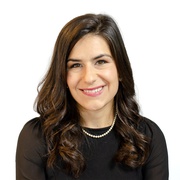
Secretary of Defense Jim Mattis, left, and Chairman of the Joint Chiefs of Staff, Marine Gen. Joseph Dunford speak to reporters during a news conference at the Pentagon, Tuesday, Aug. 28, 2018 in Washington. AP Photo/Manuel Balce Ceneta
Downplaying Ghazni, Mattis Defends Trump’s Afghanistan Strategy
The Taliban’s apparent willingness to negotiate is the more important signal of progress in America’s longest war, the defense secretary said Tuesday.
Two weeks after the Taliban bloodied Afghan security forces in a five-day battle for a key eastern city, Defense Secretary James Mattis insisted that President Trump’s strategy is drawing the insurgents to the negotiating table and, ultimately, will allow the U.S. to bring an end to the country’s longest war.
A similar claim by the outgoing head of operations in that country, Gen. John “Mick” Nicholson, was met last week with skepticism.
Nicholson and Mattis argue that a successful three-day ceasefire in June and nascent efforts by the Taliban to participate in peace talks may mark a turning point in the 17-year-old war. Individual battles and other short term military ebbs and flows—even ones as fiercely contested as this month’s assault on Ghazni—are less important markers of progress, they say.
“There’s a lot more to this than purely traditional military ‘Who shot who, today,'” Mattis told reporters at the Pentagon on Tuesday.
“Even the idea a year ago, if we said there’ll be a ceasefire at some point in the next year, I think we would have had a very hard time convincing you of that. Now we can point to that in the rearview mirror.”
Mattis pointed to a recent statement by a Taliban leader that suggested a willingness to engage in dialogue, calling it “one of the most forward-leaning statements made yet by a Taliban leader even as they conduct attacks designed to garner press attention.”
During the five-day assault on Ghazni, Taliban forces overran parts of the city and inflicted hundreds of Afghan casualties. Some critics saw it as evidence that the ceasefire wasn’t the harbinger of serious peace talks it had once been hoped to be. And because the U.S. was forced to call in air strikes to counter the attack, it ignited deep-seated skepticism that the time and money the U.S. has invested in training and equipping Afghan security forces to fight the Taliban on their own has actually allowed U.S. troops to step back from a traditional combat role.
But Mattis dismissed the significance of Ghazni in the context of the broader conflict. He argued that not only did Taliban forces fail to achieve specific military objectives, like taking the city’s provincial police headquarters, they continue to be unable to hold gains in territory. Their ability to “shoot up the residential neighborhoods [and] chase the police out where they outnumbered them, outgunned them” is not “emblematic” of the state of the conflict, he said. Afghan security forces are still in the field despite heavy casualties and “now the Taliban is talking about ceasefires because they can’t avoid it.”
“Yeah, it’s a tough fight,” Mattis said drily, when a reporter pointed out Taliban gains in smaller Afghan bases in more far-flung regions of the country.
The Trump administration has been under growing pressure to show that its year-old South Asia strategy is gainfully improving the situation in Afghanistan—a seemingly interminable conflict that has claimed thousands of U.S. lives and could soon be older than some of its American participants. Senior military leaders over the years have claimed evidence of “progress,” an assessment that often appeared premature in hindsight and which some critics have come to see as naive.
More recently, Nicholson and other senior military leaders have told Congress that the military conflict has “stalemated.” The strategic balance of power has remained essentially the same, with the Afghan government largely in control of the cities and the Taliban seizing territory in the more remote reaches of the country. (As of May, 12 percent of Afghans lived in areas under Taliban control or influence, while 23 percent lived in contested areas, according to the latest report from the Special Inspector General for Afghanistan Reconstruction.)
Still, outside analysts have agreed—cautiously—that the June ceasefire was an extraordinary moment that could herald legitimate dialogue. Graeme Smith, a consultant for the International Crisis Group, argued on this week’s Defense One Radio podcast that it “has dramatically changed our understanding of the war” because it gave leaders from both sides the confidence that their counterparts speak from a place of authority for their represented parties.
“The ceasefire that holds 98 percent speaks about a discipline,” Afghan President Afghan Ghani told Defense One in July. “You have an interlocutor that you have to take seriously.”
The U.S. and the Taliban reportedly have opened a bilateral channel with Ghani’s blessing.
Plans for Afghan-Taliban talks in Moscow, which were not to include U.S. officials, were postponed this week. The Taliban also declined to participate in a three-month ceasefire proposed by Ghani to coincide with Eid al-Adha, a major Islamic holiday.
Mattis, like Nicholson, tried to give Trump’s strategy some political breathing room. He was careful to downplay expectations about a timeline for success, repeatedly characterizing it as a “hard fight” and insisting officials knew from the beginning that it “would take time.”
He repeatedly sought to show that the plan has international backing. He pointed to a small boost in non-U.S. NATO troops announced at the summit in Brussels this summer and noted that the United Arab Emirates and Qatar have recently joined the NATO-led Resolute Support mission. And when pressed on whether the U.S. is effectively maintaining a permanent presence in Afghanistan rather than engaging in a discrete military conflict, Mattis responded by noting that there are 39 governments with some troop presence in Afghanistan.
“It’s not a U.S. presence alone and it shouldn’t be implied that way,” he said.
But the U.S. contributes by far the bulk of troops participating in the Resolute Support mission. U.S. personnel outnumber those of partner nations by multiple thousands.
Mattis on Tuesday also threw cold water on one controversial alternative to long-term U.S. troop presence in Afghanistan, a privatization proposal that has been shopped around by Blackwater founder Erik Prince in various iterations for years.
“When the Americans put their nation’s credibility on the line, privatizing it is probably not a wise idea,” he said briefly.




